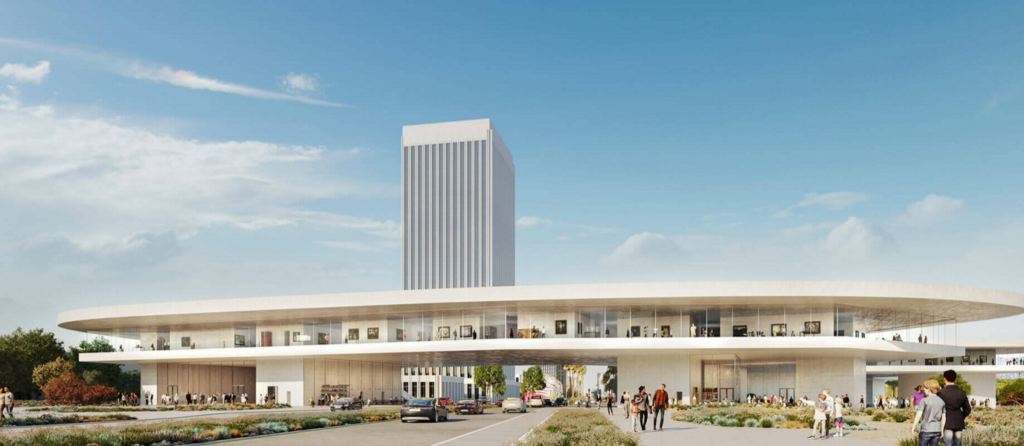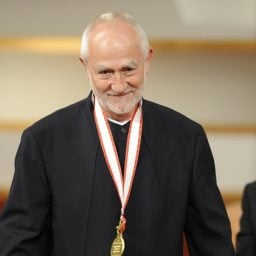At first, it was met with cautious optimism, called “architecturally ambitious” and “powerfully strange.” But eight years later, the Los Angeles County Museum of Art’s new building project designed by Swiss architect Peter Zumthor has been criticized—sometimes by the very people who praised it initially—as “uninformed” and a “scorched-earth plan.”
How did this building, initially embraced as promising, if not visionary, come to ignite a scorched-earth debate in its final stages? The story of LACMA’s campus reconstruction—and the current opposition to it—reflects some of the thorniest questions at play in the operation of museums today: what they are meant to be, who gets to decide, and who is meant to pay for them.
Time for this debate is running out, however. There is already a hole in the side of the Ahmanson Building, one of four buildings slated for demolition this month. While LACMA is currently closed to the public due to the coronavirus outbreak, it is continuing to make progress on its new building, as construction has been deemed “essential” by the city of Los Angeles. According to a statement from the museum, the process to remove asbestos from the campus is on track, and workers are wearing protective gear, remaining six feet apart, and frequently washing their hands at portable sinks.
In defending the decision to forge ahead with construction while other nearby museums, including the Academy Museum of Motion Pictures, have paused, Govan told the Los Angeles Times that the $750 million campus revamp would be an “engine of job creation and economic recovery.”
The Museum and the City
The Zumthor building, which floats one story above the ground, was intended to be groundbreaking. It originally resembled an imposing black amoeba, designed to keep all galleries on a single level and thus avoid any literal or symbolic hierarchy—the only stairs would be those up to the entrance. But in recent years, it has morphed into a more conservative-looking beige wave that crosses over Wilshire Boulevard.
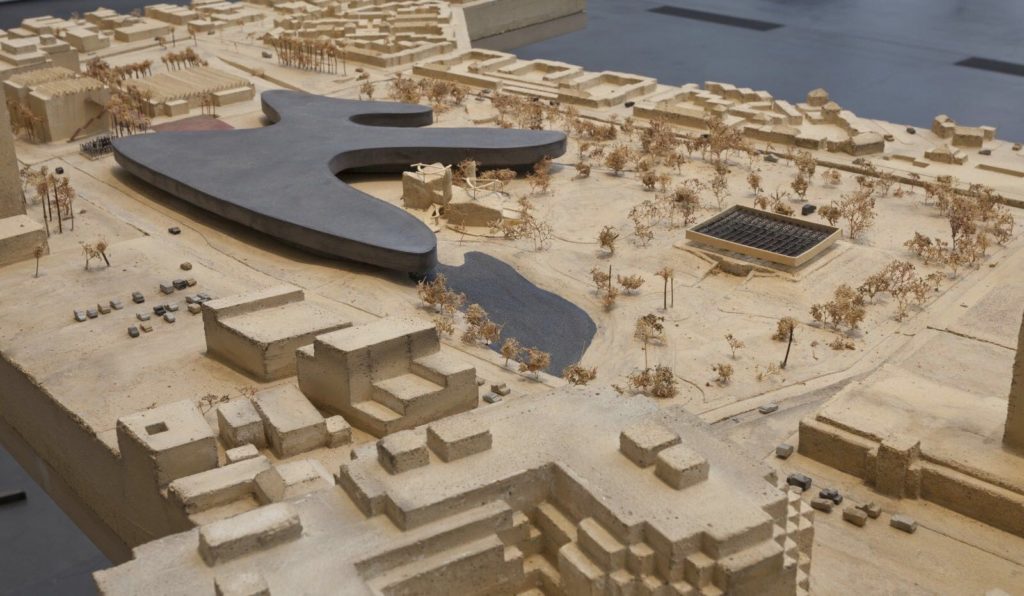
Images: Installation views, The Presence of the Past: Peter Zumthor Reconsiders LACMA, June 9—September 15, 2013, Los Angeles County Museum of Art, Photo © 2013 Museum Associates/LACMA.
As the architectural plans shifted and the costs crept up, pushback began to build. And the scrutiny has been as much on the museum’s plans as on whether Los Angeles residents can and should trust elected officials to make sound decisions about an institution their tax dollars help fund.
Five years ago, when Michael Govan first began asking local officials for funding and plan approvals, few detractors showed up to city meetings. But something changed in April 2019, after LACMA released a revised Environmental Impact Report that showed the Zumthor building had decreased from 170,000 square feet of gallery space to 109,000. Certain attractive features, such as high-ceilinged “chapel galleries,” were also cut.
Before a Board of Supervisors meeting on April 9, where city officials would vote on whether to release $117.5 million in taxpayer dollars to LACMA and allow the use of $300 million in county bonds while pledges came in, 226 citizens wrote to express concern. Only 48 wrote in support of the project. “How can a county that closes health centers and other county resources justify the new LACMA spending?” asked a local government teacher.
Some of the same concerned citizens showed up on April 9 to comment, only to be overshadowed by celebrities Diane Keaton and Brad Pitt, there to praise Zumthor’s design. The Board of Supervisors barely acknowledged detractors before voting unanimously to release the funds. The same thing happened months later, on December 3, when the City Council deliberated over whether to grant LACMA an air rights above Wilshire Boulevard. A group of citizens voiced their alarm, and, as soon as they finished speaking, Councilmember Herb Wesson congratulated LACMA for having the public on its side.
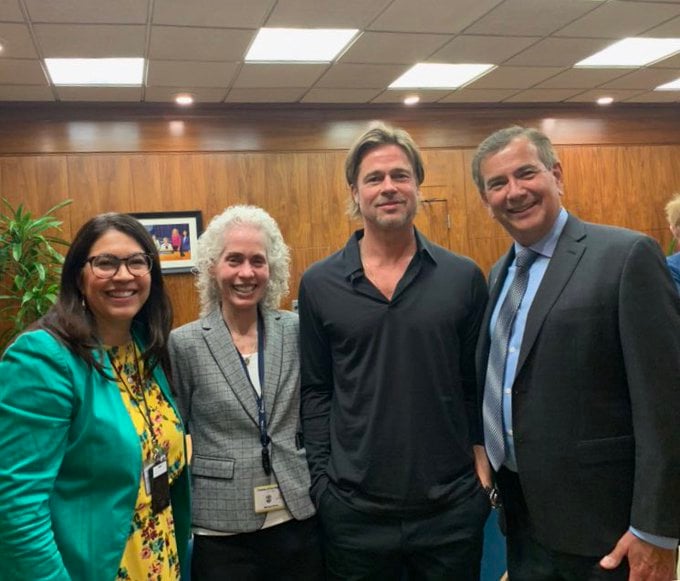
John Wicker, Deputy Chief Norma Edith Garcia, and DPH Director Barbara Ferrer with #BradPitt at the Board Meeting. Brad Pitt supporting an LA County Agenda item.
The attitude of city officials toward public comment at these meetings has only heightened concern that the opposition is not being taken seriously, especially given current probes into corruption at city hall, including investigations into bribes that have allegedly shaped official votes. Both supervisor Mark Ridley-Thomas, who represents the district home to part of LACMA (the museum spans two districts), and council member Wesson, currently running to take over the seat that Ridley-Thomas must vacate due to term limits, have come under scrutiny for alleged financial improprieties.
Discontent Rising
The split pressure on LACMA and the city rose to new heights at the beginning of this year with a series of pointed developments. The nonprofit Save LACMA, founded by a group of concerned preservationists, proposed a ballot measure that would limit the amount of county funding the museum could receive and also mandate that an elected official sit on the museum board.
Later that month, another newly formed group, the Citizens Brigade to Save LACMA (which is not associated with Save LACMA), ran two full-page newspaper ads in the L.A. Times and the New York Times showing Zumthor’s design sinking into water. The following month, the Ahmanson Foundation—which has given $130 million worth of European art to the museum over decades—announced it would cease gifts to LACMA because it was unsure how much space its gifts would be afforded in the new building.
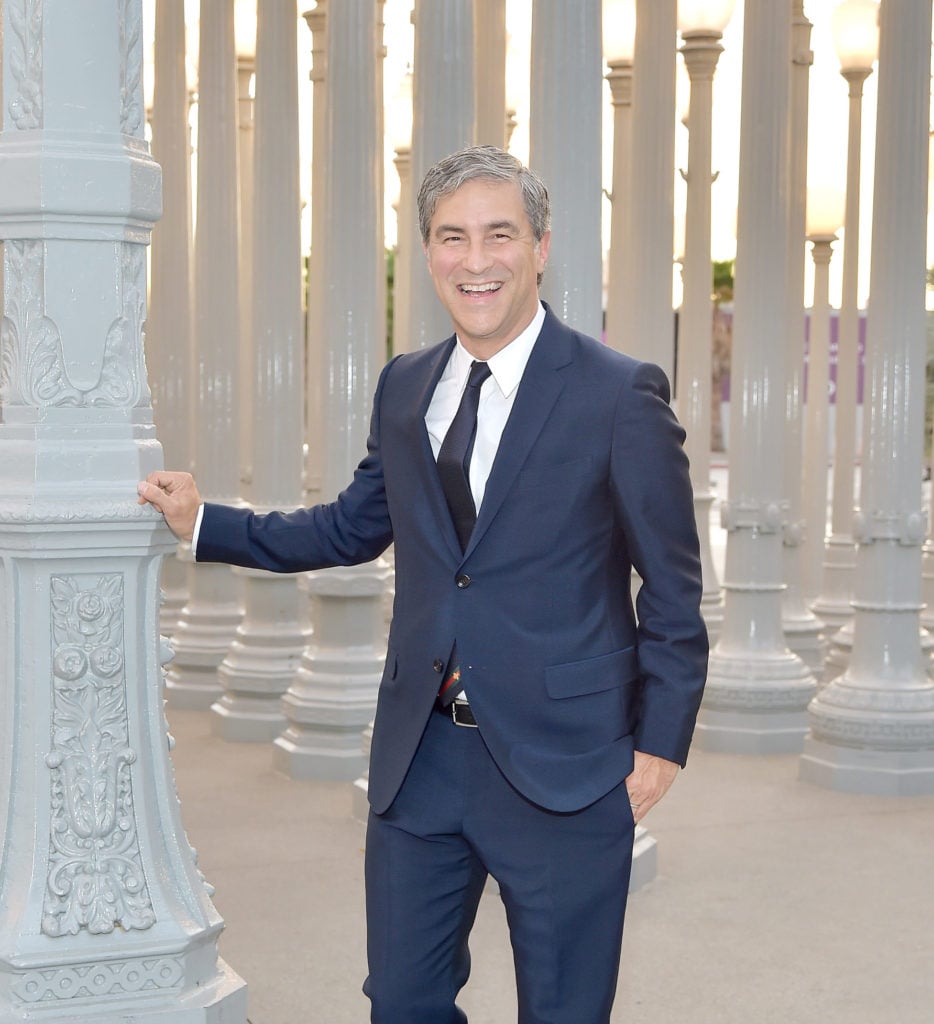
LACMA CEO and director Michael Govan. Photo by Stefanie Keenan/Getty Images for LACMA.
These signs of discontent were capped off by a report by L.A. Times journalist Carolina Miranda that, according to LACMA’s most recent tax filings, the museum carried $443 million in total debt, with $331 million owed to L.A. County. In response, the newspaper published 24 letters by readers, many more frustrated with the county for funding the project than with the building itself. “Have Los Angeles City and Los Angeles County officials taken leave of their senses…?” asked Joann Duray of Playa del Rey.
Rob Hollman, the president of Save LACMA, found such comments heartening. “It is very 11th hour, unfortunately,” he told Artnet News. “But fortunately, the public has been speaking out more and they’ve been echoing our concerns.”
Public Money
LACMA is among the only major art museums in the country that heavily relies on county funding. The county annually appropriates around $25 million for the museum, which represents between 19 percent to 23 percent of its annual budget. Govan believes the oversight and accountability that accompanies this funding “serves the museum well.” “The working relationship with the county on this project has been very, very close from day one,” he told Artnet News.
He meets with county representatives monthly, though the current crisis has affected regularity, and the museum has worked with the county on a comprehensive repayment plan for the debut it takes on. And, he said, city officials “are always welcome to attend” board meetings: “This idea that somehow LACMA is operating on its own is extremely untrue.”
Govan noted that county officials are legally required to respond to every public comment, and that LACMA administrators have met with concerned neighbors, community groups, and individuals about the project. “I can also say that we asked for meetings with a lot of community groups and were rebuffed,” said Govan. According to a statement by LACMA, the Ahmanson Foundation was one group that declined meetings (the foundation did not return requests for comment for this story).
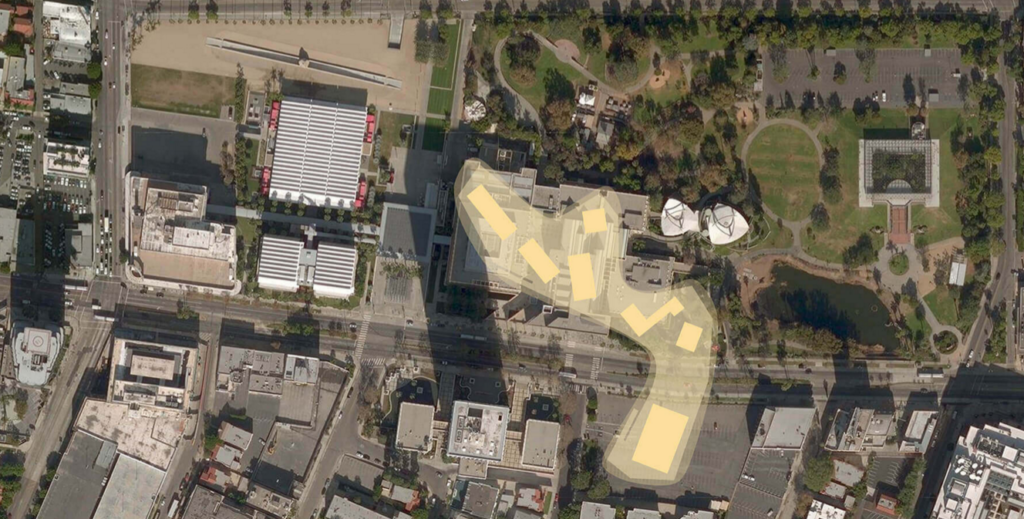
Building footprint spanning Wilshire Blvd. Atelier Peter Zumthor & Partner / Courtesy Building LACMA.
But Govan has been in touch with Save LACMA’s Hollman, and also met multiple times with architecture critic Joseph Giovannini, who has written critically of the design and cost of the new building since 2014 and now belongs to the Citizen’s Brigade to Save LACMA. “I don’t know how much more you can do, because, of course, you have hundreds and thousands of people on the other side who are working on this and need to get things going,” Govan said.
In his view, the detractors are averse to change and reluctant to reimagine what a 21st-century museum could be. But his critics view their efforts another way: as the last chance to keep an irresponsible, out-of-touch vision from taking over and diluting the museum’s mission for years to come.
History Lesson
The saga surrounding LACMA’s rebuild dates back to May 2001, when the late Andrea Rich was LACMA’s director. The museum’s board announced a competition for architects to devise a renovation to the campus for $200 million or less. The two 1965 buildings by revered L.A. architect William Pereira, finished the year the museum opened on Wilshire, required repairs to ensure climate control and fix leaky roofs. The buildings’ upper galleries were also dark and claustrophobic. The 1986 addition by Hardy Holzman Pfeiffer posed similar problems.
To address them, finalist Jean Nouvel proposed a renovation of the existing buildings, while Dutch architect Rem Koolhaas proposed replacing everything but the elegant Japanese Pavilion with a fluid combination of plazas and galleries. LACMA’s board chose Koolhaas. But by 2002, the projected cost had ballooned from $187 million to $400 million and the museum failed to raise the necessary funds.
In 2003, the renovation plan took another turn when billionaire board member Eli Broad promised $50 million toward a smaller new building for contemporary art, designed by Italian architect Renzo Piano, and Lynda and Stewart Resnick donated $45 million for a second Piano-designed building. But these donations did not pay for the projects in their entirety, and the museum took on $331 million in county bond debt to pay for the projects. The second building was still under construction in 2009, when newly appointed Govan announced he had been working with Zumthor on a plan to replace the 1965 and 1986 buildings.
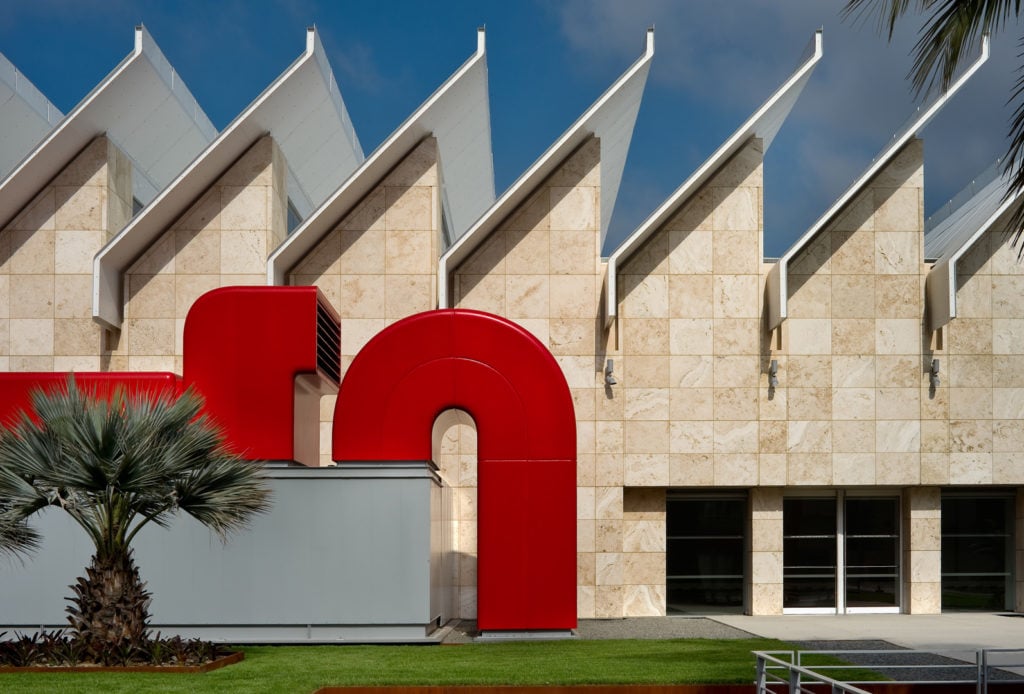
The Lynda and Stewart Resnick Pavilion at the Los Angeles County Museum of Art. Photography by James Joel. Image courtesy of Flickr.
Before the museum’s board approved Zumthor’s design for the rest of the campus in 2013, LACMA enlisted engineering firm Aecom to estimate the cost of refurbishing the existing buildings. They put the number at $317 million, according to a document released by the county (a LACMA spokesperson puts the estimate closer to $350 million). The county hired another firm to conduct an independent analysis, putting the refurbishment at $246 million. By the end of 2019, LACMA’s own estimated cost for the Zumthor project reached $750 million (Govan is confident the project will otherwise remain on budget). At that time, the museum had just $217 million of the $640 million promised funds in hand, including the $125 million from the county.
Despite Govan’s insistence that refurbishing the existing buildings would ultimately be just as expensive as constructing new ones, critics have suggested otherwise. They have also wondered if a renovation might have taken less time, thus bringing the art back to public view more swiftly. The Ahmanson Foundation, which recently issued a letter reiterating its decision to cease donations, said they decided not to purchase a painting for the museum last year “because we could not resolve the issue of when or if the painting would ever be displayed.” In response, LACMA asserted, “It is too early to give precise locations for any of the permanent collection in the new building.” (Govan has resisted donors’ attempts to dictate collection installations before, which notably led to Eli Broad rescinding a promised gift in 2008.)
According to Govan, most masterpieces have never had precise, permanent positions at LACMA anyway. “So there’s also a false notion that fixity has been the rule,” he noted, adding, “We really are permanent collection-focused. I believe the future of museums rests in this better utilization of collections.”
What Should a Museum Be?
The new building, all on a single level, allows for changing and non-hierarchical installations, said Govan, who considers flexibility a timely strength. “I’ve never seen a more exciting time in art history,” he said. “It’s thrilling to hear what curators are thinking, and how museums are almost waking up from a slumber, from a legacy of a hundred years of categorizing the world once and leaving it that way.” He described current disagreements over the building as simply part of this shift in thinking. “There are different points of view being put out there by different people. And I, of course, think it’s beautiful.”
Critic Joseph Giovannini, a co-founder of the Citizens Brigade, also finds different points of view compelling, so much so that he and his colleagues have initiated an idea competition, asking architects to suggest new, more attuned plans for LACMA. He agrees with Govan that a non-hierarchical, experiential, and responsive building would be wonderful, but believes Zumthor’s current plans fall short.
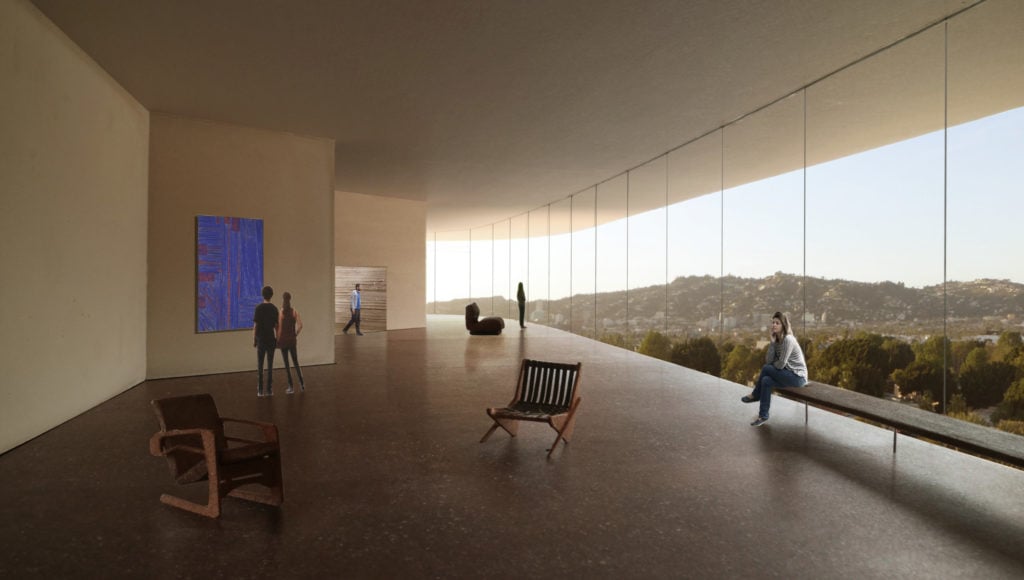
Peter Zumthor’s new LACMA design. Courtesy of Atelier Peter Zumthor.
“Zumthor wants a museum to open cords for someone who is going in, so that your senses are alert. It’s experiential, it’s immersive. And I totally believe in that,” Giovannini said. But he also believes that a poor use of space has resulted in a design that will ultimately do the art in LACMA’s collection a disservice, and so is seeking alternatives even as LACMA’s campus comes down.
Save LACMA’s founders have more pragmatic concerns, however. The day Los Angeles enforced a “stay at home” order in response to the COVID-19 outbreak, the nonprofit tweeted, “LACMA Board of Trustees now is the time to announce that you’re rescinding your request of over $450 million in county funds”—a number that incorporates the already released $125 million, the $300 million in county bond money made available to the museum while it fundraised, and the $25 million operating budget—”so that the funds can be redirected to help with our extraordinary humanitarian crisis. Please, be the hero for us all.”
